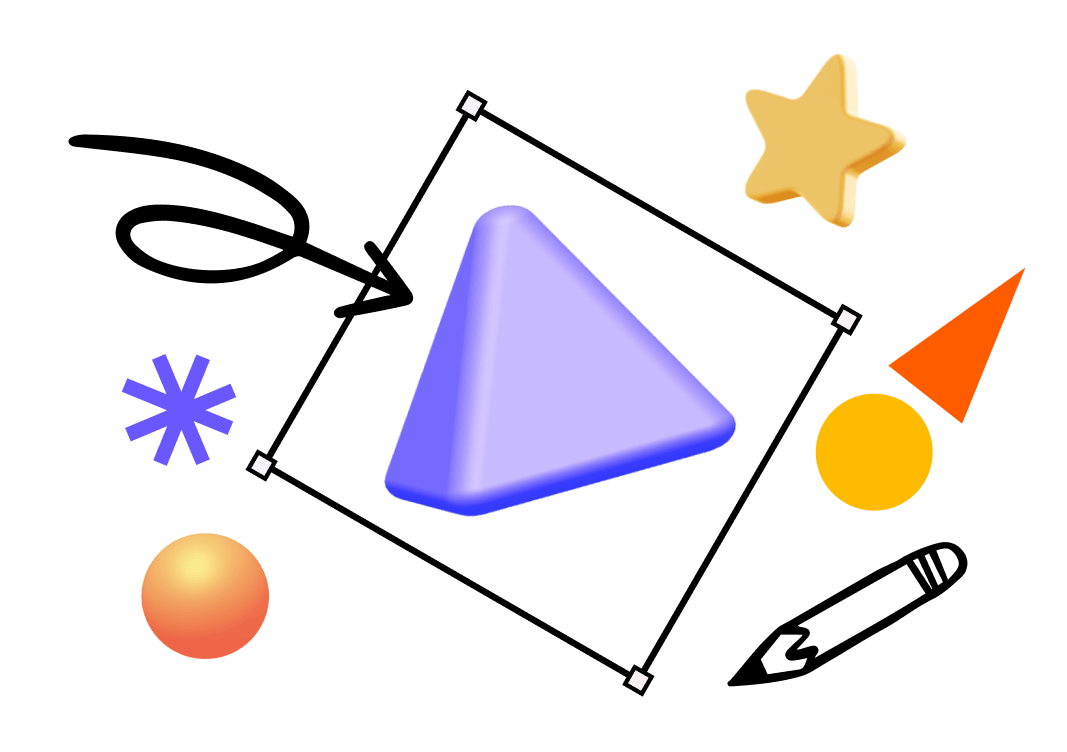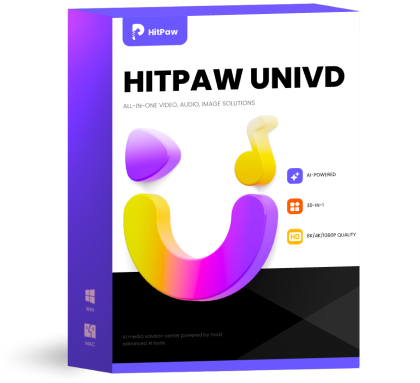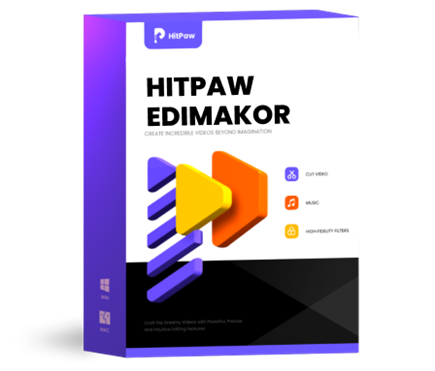Mochi 1: Everything About Genmo's New Open-Source AI Video Model
The AI video generation landscape continues to accelerate, with open-source models becoming a major force shaping how creators and developers experiment with text-to-video technologies. Among the newest additions is the Mochi 1 Preview - a next-generation open-source model launched by Genmo, designed to push the boundaries of AI-generated video realism, motion consistency, and creative controllability. This article breaks down what Mochi 1 is, how it performs, its advantages and limitations, and why it is gaining attention in the AI community. If you're curious about where Genmo video models are heading and whether Mochi 1 AI Video Generator is worth trying, this guide provides a clear, balanced overview.
Part 1: What Is Mochi 1?

What is the Mochi 1 Open-source Model
Mochi 1 is presented as an open-source, state-of-the-art ("SOTA") video generation model designed for text-to-video use. It is released as a "preview" version - meaning the model is usable now, but still evolving and subject to upgrades. Text-to-video generation is one of the most complex frontiers in generative AI: combining motion, scene coherence, character,s and environment, all from a textual prompt. Mochi 1 claims to significantly narrow the gap between closed (private/enterprise) video models and open research models. With such access, independent developers, hobbyists, and creatives can experiment with "Genmo video models"-style workflows - once limited to big labs.
Although still a preview version, it provides a glimpse into what the future of Mochi 1 AI Video Generator could look like once the full version is released.
Core Features of Mochi 1 Video Model
- Prompt Adherence: One of Mochi 1's headline claims is an exceptionally high level of adherence to the input textual prompt. According to Genmo's blog, the model was tested with a vision-language judge protocol (e.g., using Gemini-1.5-Pro-002) to evaluate how faithfully the generated video reflects the user's instruction. For example: specifying characters, environment, camera angle, lighting - the model aims to honor all.
- Motion Quality: Another major leap: realistic, fluid motion. Mochi 1 supports generation of up to about 5.4 seconds at 30 fps, with smooth temporal coherence, and even simulating physics-influenced motion (e.g., fur, hair, fluid dynamics) in some cases.This is important because many earlier text-to-video models struggled with motion blur, temporal jank, or inconsistent character movement.
- Enhanced Visual Fidelity: Image consistency across frames has always been a challenge in generative video. The preview model elevates texture quality, lighting control, and scene coherence, helping generated videos feel less "AI-glitchy."
- Open-Source Customization Capabilities: As a community-driven model, it supports:
- Checkpoint access
- Custom dataset training
- API integration
- Plugin and workflow extensions
This makes it appealing to developers and researchers-but not necessarily to everyday users.
Part 2: Technical Details of Mochi 1
Architecture & Model Size of Mochi 1
Mochi 1 uses a novel architecture called Asymmetric Diffusion Transformer (AsymmDiT).
- The model is around 10 billion parameters, claimed to be one of the largest open video generative models released.
- It also includes a video VAE (variational autoencoder) that compresses videos for efficient modelling (e.g., spatial 8×8, temporal 6×).
- The design emphasizes memory efficiency (e.g., non-square QKV layers for multi-modal attention) and modality separation (visual vs text streams) for better reasoning over both.
Applications of Mochi 1 Video Generation
Because it is open-source and fairly capable, Mochi 1 opens up many uses:
- Research and development in video generation.
- Creative tools for artists and storytellers (e.g., test scenes, concept visuals).
- Product or advertising prototypes (creating video assets rapidly).
- Synthetic data generation for robotics, simulation, training.
Advantages and Limitations of Mochi 1 Preview

Even though Mochi 1 Preview is promising, there are areas where users might face challenges.
Advantages
- Open-source and modifiable
- Free for experimentation
- High creative flexibility
- Suitable for research and innovation projects
Limitations
- Not beginner-friendly; requires setup knowledge
- Hardware-dependent -GPU often needed
- Output quality is improving but still behind top-paid video models
- Lacks the intuitive UI and convenience of commercial AI video generators
At this stage, Mochi 1 Preview is best suited for technically comfortable users or developers who want full control and are eager to iterate and experiment.
Part 3: How to Get Started with Mochi 1 Preview
If you want to dive into Mochi 1, here's a step-by-step starter guide:
1. Access the model:Visit the Genmo blog and find links to the weights (e.g., on Hugging Face) and GitHub repo.

2. Set up your environment:Ensure you have a compatible GPU/compute environment (ideally with access to CUDA or other frameworks). Clone the repo, download weights, and set up dependencies.
3. Explore prompts:Use the provided prompts or your own to test the model. For example: "A young woman riding a bicycle through a sunlit forest, motion-blur style".
4. Generate video:Run the model to output a 480p, up to ~5.4 sec clip at 30 fps. Review motion quality and prompt fidelity.

5. Fine-tune / iterate:Adjust your prompt, or modify settings (camera angle, lighting, character appearance) to get closer to your vision.
6. Deploy / integrate:Because the model is open, you can integrate into your own app or workflow (e.g., script-based video generation, API usage).
7. Be mindful of limitations:As per the release, watch for warping in complex motion, and note that higher resolutions (HD) are still forthcoming.
Why Mochi 1 Preview Matters for You
If you're a creator, marketer, educator, or developer, the appearance of a model like Mochi 1 changes the game in several ways:
- Accessibility: You no longer need massive compute or closed-source licences to experiment with high-quality text-to-video.
- Control: With open weights and architecture, you (or your team) can fine-tune, adapt or integrate Mochi 1 into custom workflows.
- Rapid prototyping: Rather than traditional film/video production for rough drafts or concepts, you can generate a quick video clip to test a scene, narrative or marketing concept.
- Creative freedom: Because the model is open and permissively licensed, you're free to experiment commercially (within license) and push boundaries.
However: if your goal is "rapid production for non-technical users" (i.e., minimal setup, minimal learning curve), a fully open architecture like Mochi 1 still requires some effort - setting up model weights, GPU compute, managing rendering. This is where more streamlined tools can step in.
Bonus: A Simpler Video Generation Workflow for Everyday Users
Despite its strong potential, Mochi 1 Preview still requires a moderate technical skillset, including environment setup, GPU access, and familiarity with open-source workflows. Many creators, marketers, and everyday users simply want to type a prompt and instantly get a polished AI video - no installation, no coding, no model setup. For those users, an online, beginner-friendly tool like HitPaw Online Video Generator offers a faster and more accessible way to create AI videos in minutes.
Key Features for AI Video Creation
- AI Video Generator (Text-to-Video & Image-to-Video): Simply enter a prompt or upload an image to auto-generate styled video footage.
- Multiple AI Video Models Integrated: Offers flexible results by combining various model APIs instead of relying on one single model.
- Rich Style Templates: Includes cinematic, animation, influencer, product marketing, and social media-ready designs.
- Beginner-Friendly Interface: No coding, no configuration - suitable for non-technical users.
- Cloud-Based Rendering: Video generation runs online without hardware limitations.
How to Create an AI Video with HitPaw (Beginner-Friendly Guide)
- Step 1: Open HitPaw Online Video Generator
- Step 2: Input Your Prompt or Upload an Image
- Step 3: Set Video Parameters
- Step 4: Generate and Preview
- Step 5: Download or Edit Further
Visit the platform in your browser and choose a video generation mode (Text-to-Video or Image-to-Video).

Pick an AI model for creation. Describe your scene or concept clearly. You can specify style, characters, motion, and camera angle.

Pick the AI video's resolution, duration, aspect ratio, and add negative prompts.

Click "Generate" and wait for the AI to produce a preview. You can refine or regenerate if needed.

Export the finished video or use built-in editing tools for captions, music, or enhancements.
This workflow enables anyone - with zero technical background - to produce share-ready AI videos much faster than setting up an open-source pipeline.
FAQ about Mochi 1 Video Model
Q1. What does Mochi 1 preview mean exactly?
A1. It means the first public checkpoint of the Mochi 1 model available for use, but not the final fully-optimized version. It's a live and evolving checkpoint.
Q2. Can I use Mochi 1 for commercial purposes?
A2. Yes, the model is released under the Apache 2.0 license, which allows for commercial use provided you comply with the license terms.
Q3. What kinds of videos can I generate with Mochi 1?
A3. You can generate short (~5 sec) video clips (currently up to 480p) from textual prompts describing characters, scene, motion, lighting, etc. The model excels at photorealistic styles.
Q4. Do I need programming or deep-learning expertise to use Mochi 1?
A4. Some technical skill is required: you'll need to set up the environment, download the weights, and run generation. If you're a non-technical user, you might prefer a ready-built tool with GUI (see above).
Conclusion
The Mochi 1 preview represents a major milestone in open-source text-to-video generation - delivering high-fidelity motion, strong prompt adherence and accessible model architecture. Whether you're a researcher, creator, or developer, this model opens up new frontiers for experimentation. Yet, if your aim is rapid, low-friction production of AI videos (rather than model setup), a simple text to video tool offering one-click generation remains highly attractive. By blending research-grade capability with production-ready ease, you can choose the flow that fits your process.
Generate Now!








Home > Learn > Mochi 1: Everything About Genmo's New Open-Source AI Video Model
Select the product rating:
Natalie Carter
Editor-in-Chief
My goal is to make technology feel less intimidating and more empowering. I believe digital creativity should be accessible to everyone, and I'm passionate about turning complex tools into clear, actionable guidance.
View all ArticlesLeave a Comment
Create your review for HitPaw articles